News
Structure and working principle of plunger pump
Structure and working principle of Plunger pump
Structure and composition of plunger pump
Plunger pump is mainly composed of power end and hydraulic end, and is attached with pulley, check valve, safety valve, voltage stabilizer, smooth system, etc.
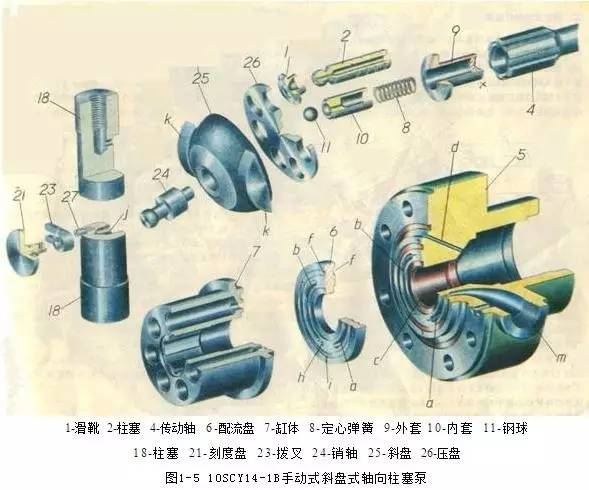
01
Power end
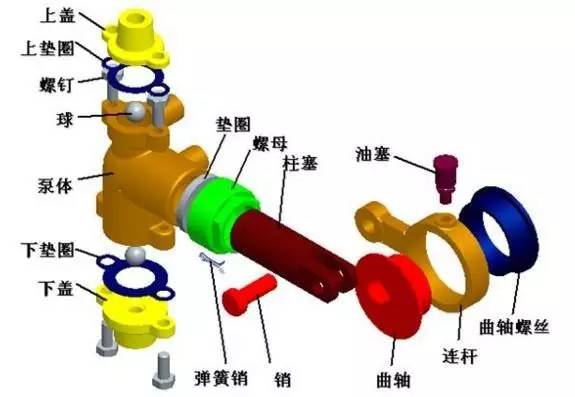
(1) Crankshaft
The crankshaft is one of the key components of the pump. The integral type of crank shaft is adopted, which will complete the key step from rotary motion to reciprocating linear motion. In order to make it balanced, each crank pin is 120 ° to the center.
(2) Connecting rod
The connecting rod transmits the thrust on the plunger to the crankshaft, and also converts the rotary motion of the crankshaft into the reciprocating motion of the plunger. Its rod section is I-shaped, the big end is split, the bearing bush is split thin wall, and the small end bush is sleeve type and positioned by it.
(3) Crosshead
The crosshead connects the oscillating connecting rod and the reciprocating plunger. It has a guiding role. It is closed to the connecting rod and connected to the plunger clamp.
(4) Floating sleeve
The floating sleeve is fixed on the engine base. On the one hand, it can isolate the oil tank from the sump, and on the other hand, it can act as a floating bearing point for the crosshead guide rod, which can improve the service life of the moving seal components.
(5) Stand
The base is a local force bearing component of the power end and the hydraulic end of the device. There are bearing holes on both sides of the rear of the base, positioning pin holes connected with the hydraulic end on the front to ensure the centricity between the center of the slideway and the center of the pump head, and a drain hole on one side of the front of the base to drain the leaking liquid.
02
Hydraulic end
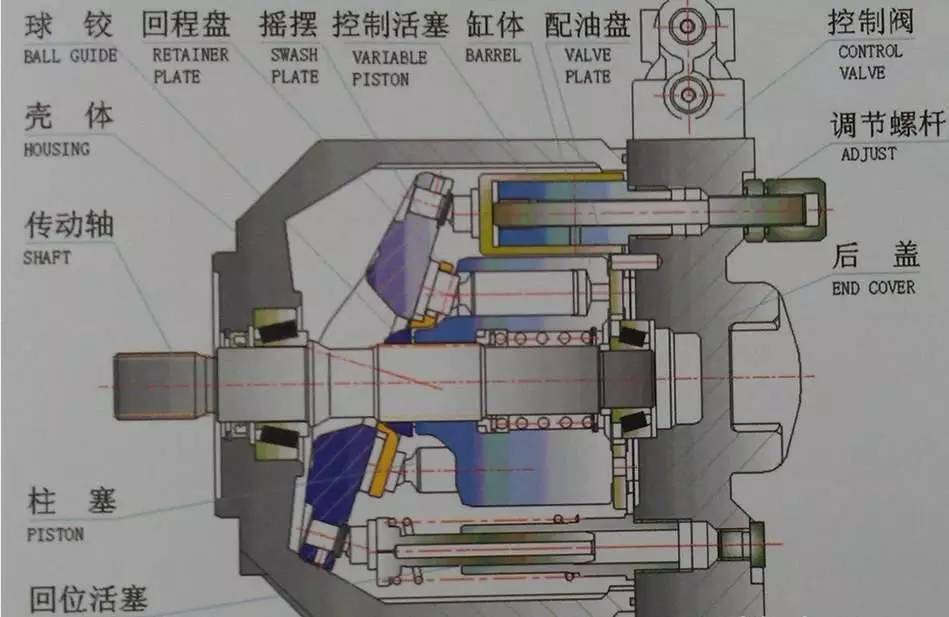
(1) Pump head
The pump head is integrally forged from stainless steel. The suction and discharge valves are vertically arranged. The suction hole is at the bottom of the pump head, and the discharge hole is at the side of the pump head, which is connected with the valve chamber, simplifying the discharge pipeline system.
(2) Seal
The sealing box is connected with the pump head by flange, and the sealing mode of the plunger is rectangular soft packing made of carbon fiber, which has good high-pressure sealing performance.
(3) Plunger
(4) Inlet and outlet valves
The inlet and outlet valves and valve seats are of low damping and conical valve structure suitable for delivering liquid with high viscosity, and have the characteristics of reducing viscosity. The contact surface has high hardness and sealing performance to ensure that the inlet and outlet valves have sufficient service life.
03
Affiliated to supporting parts
It mainly includes check valve, voltage stabilizer, smooth system, safety valve, pressure gauge, etc.
(1) Check valve
The liquid discharged from the pump head flows into the high-pressure pipeline through the low damping check valve. When the liquid moves in the opposite direction, the check valve closes and the damping high-pressure liquid flows back to the pump body.
(2) Voltage stabilizer
The high-pressure pulsating liquid discharged from the pump head becomes a relatively stable high-pressure liquid activity after passing through the voltage stabilizer.
(3) Smooth system
The gear oil pump is mainly used to pump oil from the oil tank to smooth the rotating parts of the crankshaft and cross.
(4) Pressure gauge
There are two kinds of pressure gauges: ordinary pressure gauge and electric contact pressure gauge. The electric contact pressure gauge belongs to the instrument system, which can achieve the purpose of automatic control.
(5) Safety valve
A spring slightly open safety valve is installed on the discharge pipeline. It is arranged by Shanghai Zede Water Pump, which can ensure the sealing of the pump at the rated working pressure, and can be opened automatically in case of overpressure, playing a role in pressure relief and maintenance.
Classification of plunger pumps
The piston pump is generally divided into single piston pump, horizontal piston pump, axial piston pump and radial piston pump.
1 Single plunger pump
The structure consists of eccentric wheel, plunger, spring, cylinder block and two one-way valves. A sealed volume is formed between the plunger and the cylinder block hole. The eccentric wheel rotates once, and the plunger moves up and down once. It moves downward to absorb oil and upward to drain oil. The volume of oil discharged per revolution of the pump is called the displacement, which is only related to the structural parameters of the pump.
2 Horizontal plunger pump
The horizontal plunger pump is a hydraulic pump that consists of several plungers (usually 3 or 6) in parallel, uses a crankshaft to directly push the plunger through the connecting rod slider or the eccentric shaft to perform reciprocating motion, and completes liquid suction and discharge. They are also installed with valve type flow distribution, and most of them are fixed displacement pumps. The emulsion pump in the coal mine hydraulic support system is generally a horizontal plunger pump.
The emulsion pump is used in the coal mining face to provide emulsion for the hydraulic support. Its working principle is to drive the piston to do reciprocating motion by the rotation of the crankshaft to complete liquid suction and discharge.
3 Axial type
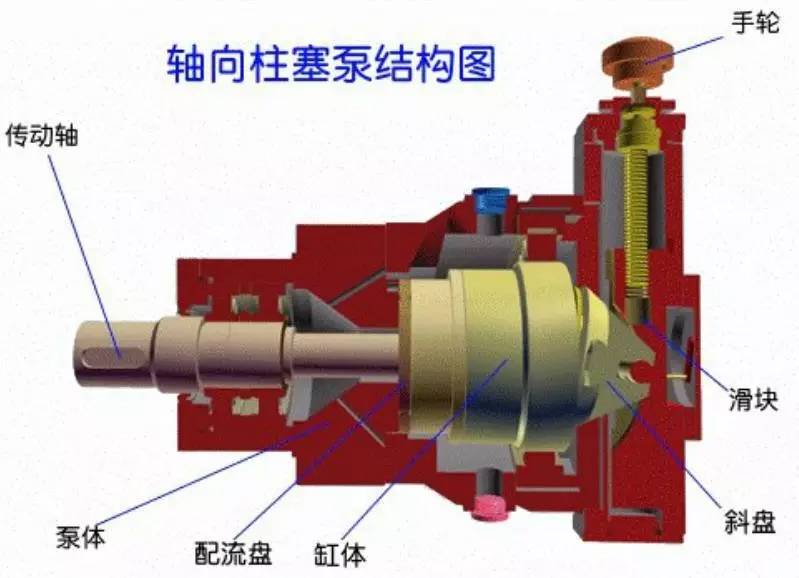
The axial piston pump is a piston pump whose reciprocating motion direction of the piston or plunger is parallel to the central axis of the cylinder block. The axial piston pump shall stop working with the volume change produced by the reciprocating movement of the plunger parallel to the transmission shaft in the plunger hole. As the plunger and the plug hole are round parts, they can achieve a very high precision fit during processing, so the volumetric efficiency is high.
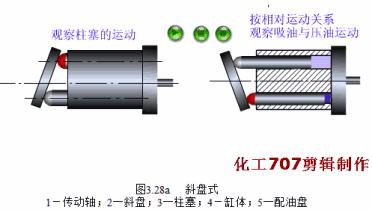
4 Straight shaft swashplate type
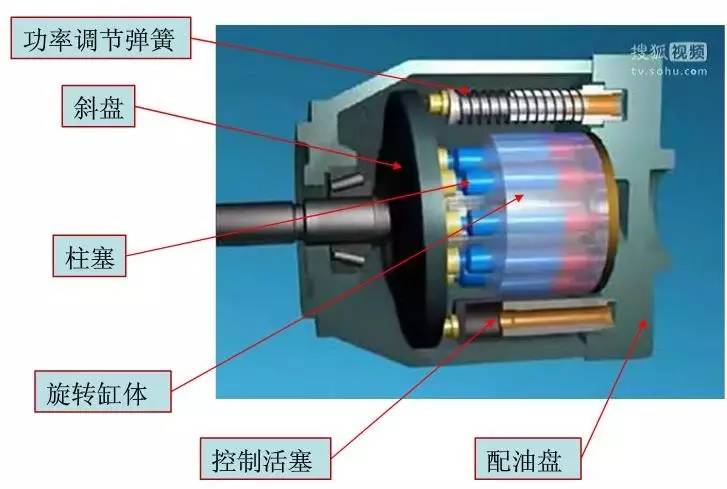
The straight shaft swashplate plunger pump is divided into pressure oil supply type and self suction type. Most of the pressure oil supply hydraulic pumps use the oil tank with air pressure. The hydraulic oil tank with air pressure oil supply must wait until the hydraulic tank reaches the operating air pressure after starting the machine each time. If the machine is started when the air pressure of the hydraulic oil tank is insufficient, it will pull off the slipper in the hydraulic pump and cause abnormal wear of the return plate and pressure plate in the pump body.
5 Radial type

Radial piston pump can be divided into two categories: valve port and shaft port. The valve flow distribution radial piston pump has the defects of high defect rate and low efficiency. The axial flow distribution radial piston pump developed in the 1970s and 1980s overcame the lack of valve flow distribution radial piston pump. Due to the structural characteristics of the radial pump, the fixed axial flow distribution radial piston pump is more impact resistant, has a long life and high control accuracy than the axial piston pump. The variable stroke of the variable stroke short pump is completed by changing the eccentricity of the stator under the action of the variable plunger and the limit plunger. The large eccentricity is determined to be 5-9mm (depending on the displacement), and the variable stroke is very short. The variable mechanism is designed to be controlled by high pressure and stopped by the control valve. Therefore, the response speed of the pump is fast. The radial structure design restrains the problem of eccentric wear of slippers in axial piston pumps. The impact resistance can be greatly improved.
6 Hydraulic type
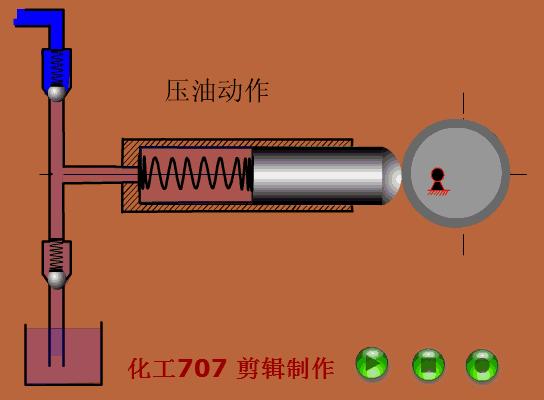
The hydraulic oil tank of the hydraulic piston pump is supplied by air pressure. After starting the machine each time, it is necessary to wait until the hydraulic oil tank reaches the operating air pressure before operating the machine. The straight shaft swashplate plunger pump is divided into two types: pressure oil supply type and self suction type. Most of the pressure oil supply hydraulic pumps use the oil tank with air pressure, and some hydraulic pumps have their own oil make-up pump to provide pressure oil to the oil inlet of the hydraulic pump. The self suction oil of the self suction hydraulic pump is very strong and does not require external oil supply.
Working principle of plunger pump
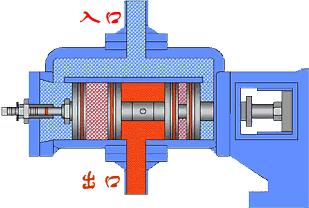
The total reciprocating travel L of the plunger pump is constant, which is determined by the lift of the cam. The amount of oil supply per cycle of the plunger depends on the oil supply stroke, which is variable without camshaft control. The start time of fuel supply does not change with the change of fuel supply stroke. Turning the plunger can change the end time of oil supply, thus changing the oil supply quantity. When the plunger pump is working, under the action of the cam and plunger spring on the camshaft of the fuel injection pump, the plunger is forced to move up and down to complete the oil pumping task. The oil pumping process can be divided into the following two stages.
Oil inlet process
When the convex part of the cam rotates, the plunger moves downward under the action of the spring force, and the upper space of the plunger (called the pump oil chamber) generates vacuum. When the upper end surface of the plunger opens the oil inlet hole on the plunger sleeve, the diesel oil filled in the upper body oil passage of the oil pump enters the pump oil chamber through the oil hole, and the plunger moves to the bottom dead center, and the oil inlet is completed
Oil return process
The plunger supplies oil upward. When the chute (stop supply side) that goes up to the plunger is connected with the oil return hole on the sleeve, the low-pressure oil circuit of the pump oil chamber communicates with the central hole, radial hole and chute at the head of the plunger. The oil pressure drops suddenly, and the oil outlet valve closes quickly under the effect of the spring force to stop the oil supply. Then the plunger will go up. When the cam bulge partially turns, the plunger will go down again under the action of the spring. At this point, the next cycle begins.
The plunger pump is introduced based on the principle of a plunger. There are two check valves on a plunger pump, and the direction is opposite. When the plunger moves in one direction, the cylinder presents negative pressure. At this time, a check valve opens and the liquid is sucked into the cylinder. When the plunger moves in the other direction, the other check valve opens after the liquid is compressed, and the liquid in the sucked cylinder is discharged. This working mode forms continuous oil supply after continuous movement.
Tianjin Leda is a professional supplier of various plunger pumps, oil pumps, hydraulic pumps, gear pumps and pump stations. We cooperate with many world famous brands, such as Nachi, Yuken, HAVE, and so on
RELATED NEWS
- The principle of ball screw transmission: 2022-01-06
- Do you know the correct operation method for installing ball screw nut pair? 2022-01-06
- How to distinguish between good quality and bad linear guide rail 2021-10-16
- Hiwin linear guides promote the rapid development of automation technology 2021-10-16
- Do you know what should be paid attention to when selecting the oil pump model? 2022-11-03
CATEGORIES
LATEST NEWS
CONTACT US
Contact: ella.cai
Phone: 008615022633418
E-mail: aihua_1981@163.com
Whatsapp:008615022633418
Add: Wangchuanchang road 1#,Hedong District,Tianjin City,China
